City chokes as protests wreak havoc
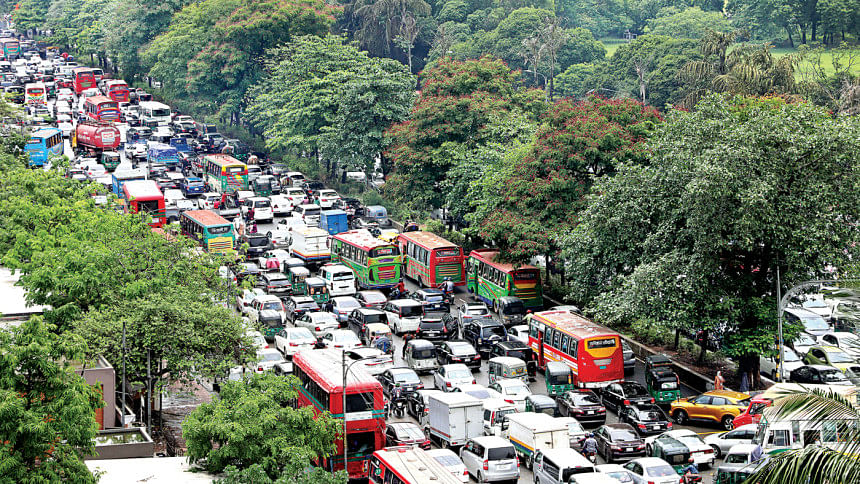
Ninety-six-year-old Nurjahan Begum left her home in Old Dhaka's Mogholtuli for her daughter's house in Banasree around 2:00pm yesterday.
Accompanied by her son, Mizanur Rahman, she could reach near Gulistan's Golap Shah Mazar by rickshaw after an hour.
"It took us an hour just to reach Gulistan. Then we waited another one and a half hours, but there wasn't a single empty auto-rickshaw. I don't know how long it will take to get to Banasree," said a frustrated, Mizanur.
Meanwhile, Nurjahan, struggling to cope with the heat and exhaustion, was seen scolding her son for failing to find transportation.
"I'm in unbearable pain, please do something," Nurjahan was overheard telling her son, as drops of sweat rolled down her forehead.
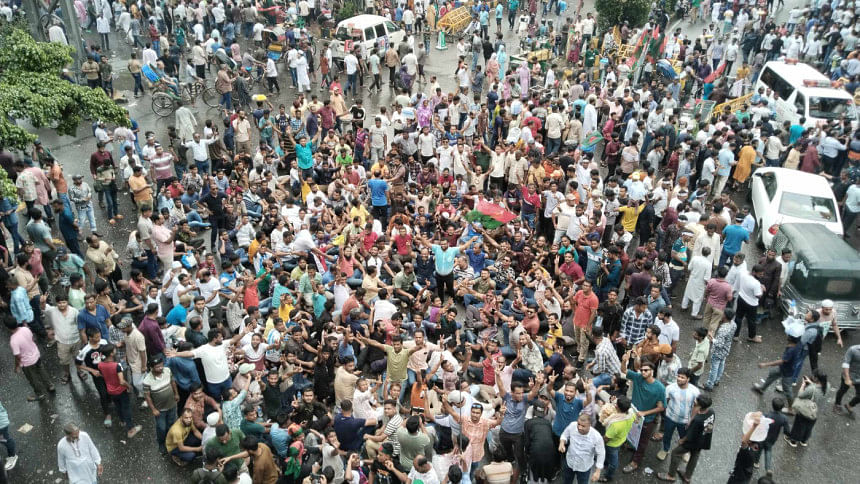
Like Nurjahan, her son, and city dwellers have been bearing the brunt of gridlock caused by repeated blockades, particularly at Shahbagh and Kakrail -- two major thoroughfares of the capital -- over the last couple of days.
Yesterday, supporters of BNP leader Ishraque Hossain staged a sit-in from Matsya Bhaban to Kakrail, demanding that he be sworn in as Dhaka South City Corporation mayor.
Simultaneously, activists of the Jatiyatabadi Chhatra Dal occupied the Shahbagh intersection and the road in front of the InterContinental Hotel, demanding justice for the killing of JCD leader Shahriar Alam Shammo, a Dhaka University student.
With key streets blocked on the last weekday and a huge crowd in Old Dhaka for Eid wholesale shopping, city dwellers suffered immensely throughout most of the day yesterday.
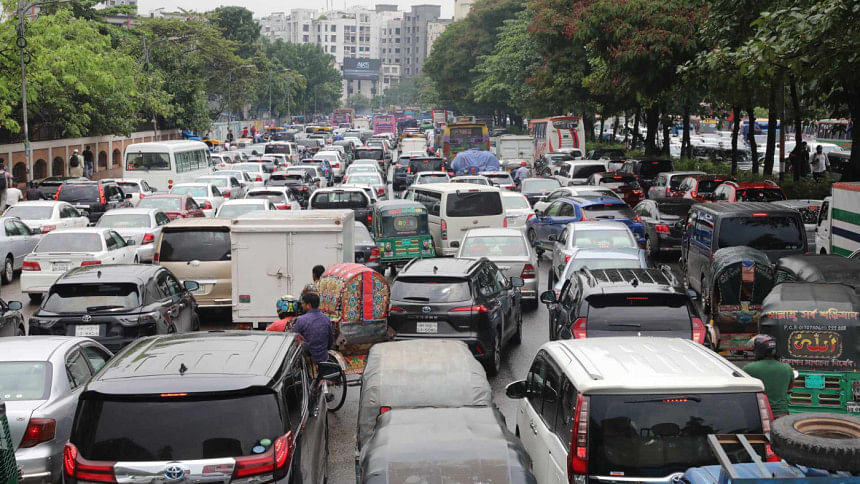
Thousands had no choice but to walk long distances. Many were seen stuck in vehicles for hours, as drivers had no way to move forward or turn back.
Some patients even left their vehicles in the Banglamotor area, where police diverted traffic towards Moghbazar, and started walking to Bangladesh Medical University and Dhaka Medical College Hospital.
From morning till afternoon, different parts of the city, including Shahbagh, Kakrail, Matsya Bhaban, Purana Paltan, and Gulistan, Motijheel, and Jatrabari, had stand-still traffic.
Metro rail saw a spike in passengers and huge lines were seen in front of the ticket counters and on the platforms.
At Purana Paltan intersection, 50-year-old Shahana Begum waited for nearly an hour for a bus to Shyamoli. However, she could not board any buses, as they were full of passengers and relatively few were available yesterday.

"They've resumed blocking roads after a few days. Men, somehow, manage to reach their destinations, but for women, it's a nightmare. These blockades affect the female commuters most," she told The Daily Star.
As she spoke, a bus packed with passengers appeared. Desperate, Shahana competed with several males and managed to grab the door handle.
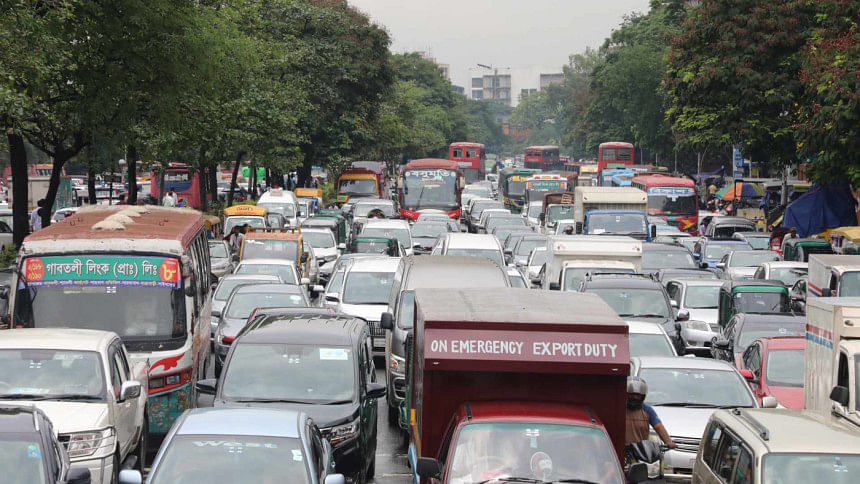
The increasing frequency of such blockades has left citizens exasperated, especially as temperatures continue to rise. For the elderly and women, particularly those travelling alone or with children, their sufferings have been even more severe.
"This city feels like a trap during these protests," said Shafiul Islam, a commuter spotted at Banglamotor while walking from Motijheel to Farmgate.
"You either walk for hours or stand in one place, hoping that traffic will move."
The traffic situation began to improve after 5:00pm, when supporters of Ishraque and JCD leaders and activists left the streets.


 For all latest news, follow The Daily Star's Google News channel.
For all latest news, follow The Daily Star's Google News channel. 

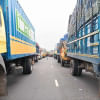


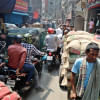
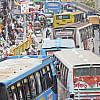

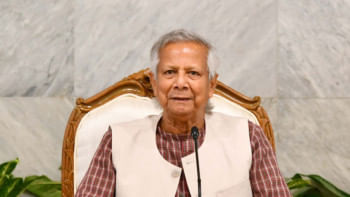
Comments